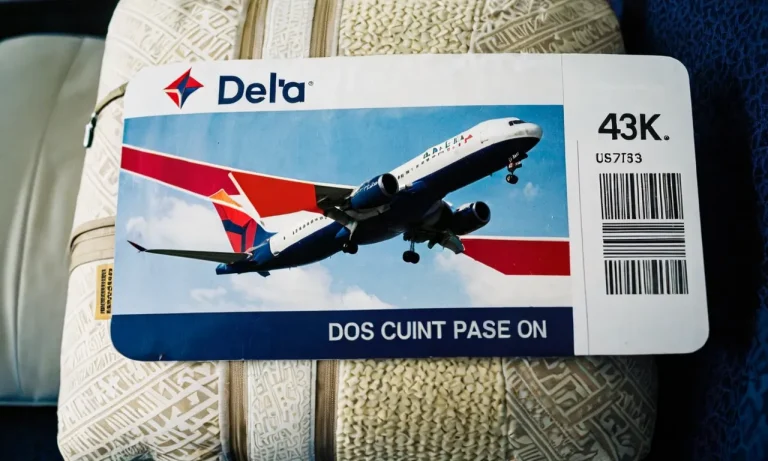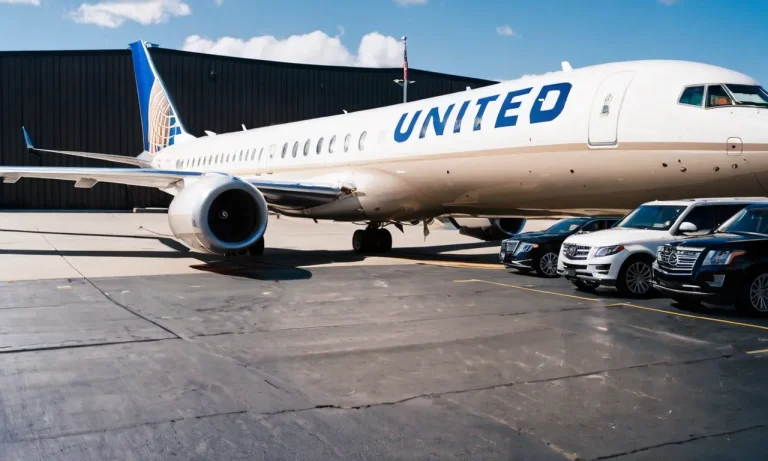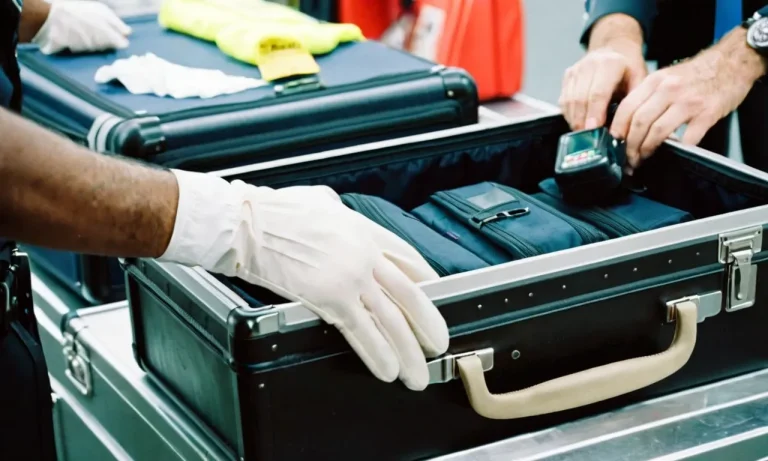The Most Traveled Day Of The Year By Car
The winter holidays are a popular time for road trips to visit family and friends across the country. If you’re wondering when roads will be the most crowded with cars this holiday season, here’s a quick answer: the most traveled day of the year by car is generally the Saturday before Christmas.
In this comprehensive guide, we’ll look at data and trends showing the busiest travel days during the winter holiday period. We’ll cover key details around the day and weekend with the highest traffic volumes, when highways see peak congestion, and tips to avoid heavy traffic if you’re hitting the road over the holidays.
Background on Holiday Travel Trends
The holiday season is a time when friends and family come together to celebrate and create cherished memories. It is also a time when many people embark on journeys to be with their loved ones. In this article, we will delve into the background of holiday travel trends, specifically focusing on the most traveled day of the year by car.
Total holiday travel volume overview
During the holiday season, there is a marked increase in the number of people traveling. According to the American Automobile Association (AAA), millions of Americans hit the road each year to celebrate Thanksgiving, Christmas, and New Year’s.
In fact, the AAA estimates that over 90% of holiday travelers choose to travel by car. This high volume of car travel can lead to congested highways and longer travel times, so it’s important to plan accordingly and allow for extra time when hitting the road.
Split between air and car travel
While air travel offers convenience and speed, many people still prefer to travel by car during the holiday season. There are several reasons for this preference. Firstly, traveling by car allows for more flexibility in terms of departure and arrival times.
This is particularly important during the holiday season when schedules can be unpredictable. Additionally, car travel provides an opportunity for travelers to bring along larger items, such as gifts or holiday decorations, that may be cumbersome to transport on a plane.
Lastly, car travel can often be more cost-effective, especially for families or groups traveling together.
Past trends and 5-10 year projections
Looking back at past holiday travel trends, there are some patterns that emerge. The Wednesday before Thanksgiving has consistently been identified as one of the busiest travel days of the year. This day, often referred to as “Black Wednesday,” sees a significant surge in the number of cars on the road as people rush to reach their destinations in time for Thanksgiving dinner.
Looking ahead to the next 5-10 years, experts predict that holiday travel by car will continue to rise. As the economy improves and more people have disposable income, they are likely to take advantage of the opportunity to travel and spend time with loved ones during the holiday season.
Additionally, advancements in technology and infrastructure may make car travel even more appealing, with features like autonomous vehicles and improved road systems.
The Peak Pre-Christmas Travel Day and Weekend
For many people, the holiday season is a time for joy, celebration, and spending quality time with loved ones. However, it is also a time when roads and highways become congested with travelers eager to reach their holiday destinations.
Among the various days throughout the year, the Saturday before Christmas has been identified as the single busiest day of the year for car travel.
Saturday before Christmas as the single busiest day
On the Saturday before Christmas, the roads are packed with travelers embarking on their journeys to visit family and friends or enjoy a holiday getaway. This day sees a significant increase in traffic volume, as people try to make it to their destinations before Christmas Eve.
According to a study conducted by the American Automobile Association (AAA), this day consistently ranks as the busiest day of the year for car travel.
The surge in traffic can be attributed to a variety of factors. Firstly, it is the last weekend before Christmas, and many people take advantage of the weekend to travel. Additionally, some individuals may choose to take an extended break from work, allowing them to travel on this day.
The combination of these factors contributes to the high volume of cars on the roads.
Friday before Christmas as the second busiest day
While the Saturday before Christmas takes the top spot, the Friday before Christmas is not far behind in terms of traffic congestion. This day is often referred to as the second busiest day of the year for car travel.
Many individuals prefer to start their holiday travels on Friday, giving them an extra day to reach their destinations and potentially avoid the peak traffic on Saturday.
The Friday before Christmas sees a similar increase in traffic volume as the Saturday before, as people rush to complete their workday, pack their cars, and hit the road. It is advisable for travelers to plan their journeys accordingly and be prepared for potential delays on this day as well.
Full weekend traffic analysis
When analyzing the full weekend leading up to Christmas, it becomes evident that the combination of Friday and Saturday creates a significant surge in car travel. The roads are bustling with activity as families and individuals make their way to holiday celebrations or vacation destinations.
It is important for travelers to be aware of the increased traffic and plan their journeys accordingly. Leaving early in the morning or late at night can help avoid some of the congestion. Additionally, staying informed about current traffic conditions through reliable sources, such as the local traffic department or popular navigation apps, can help travelers make informed decisions and choose the best routes.
Remember, safety should always be a top priority when traveling during this busy period. It is essential to be patient, follow traffic rules, and drive defensively. By staying alert and prepared, travelers can navigate the peak pre-Christmas travel days with ease and arrive at their destinations safely.
Peak Highway Congestion Times
Worst corridors and metro areas for traffic
When it comes to the most traveled day of the year by car, it’s important to know which corridors and metro areas are prone to heavy traffic. According to recent studies, some of the worst corridors for traffic congestion include:
- The I-405 in Los Angeles, California
- The I-95 in Miami, Florida
- The I-285 in Atlanta, Georgia
- The I-10 in Houston, Texas
- The I-5 in Seattle, Washington
These corridors are notorious for experiencing long delays and bumper-to-bumper traffic, especially during peak travel times such as holidays and long weekends.
In addition to specific corridors, certain metro areas have a higher likelihood of experiencing heavy traffic. Some of the worst metro areas for traffic congestion include:
- Los Angeles, California
- San Francisco, California
- New York City, New York
- Washington, D.C.
- Atlanta, Georgia
These metro areas have a high population density and a large number of commuters, leading to increased traffic congestion on a daily basis.
For more detailed information on traffic congestion and specific corridors, you can visit www.traffic.com which provides real-time traffic updates and insights.
Morning, midday, and evening congestion patterns
Understanding the congestion patterns throughout the day can help drivers plan their trips more efficiently. Here are some general trends when it comes to morning, midday, and evening congestion:
Morning: The morning rush hour typically occurs between 7:00 AM and 9:00 AM, with heavy traffic on highways leading into major cities. Commuters heading to work or school contribute to the increased congestion during this time.Midday: Between 11:00 AM and 2:00 PM, traffic congestion often eases up as many people are already at their destinations. However, certain areas with significant tourist attractions or commercial centers may still experience moderate congestion.Evening: The evening rush hour typically occurs between 4:00 PM and 7:00 PM, with heavy traffic on highways leading out of major cities. Commuters returning home from work or running errands contribute to the increased congestion during this time.
It’s important to note that these congestion patterns can vary depending on the day of the week, local events, and other factors. Therefore, it’s always a good idea to check for real-time traffic updates before embarking on a journey.
Tips to Avoid Heavy Traffic
Optimizing departure date and time
One of the key factors in avoiding heavy traffic on the most traveled day of the year by car is to carefully choose your departure date and time. It is recommended to plan your trip during off-peak hours, such as early in the morning or late at night, to avoid the rush of other commuters.
By avoiding peak travel times, you can significantly reduce your chances of getting stuck in traffic jams and make your journey more pleasant.
Route planning to avoid bottlenecks
Route planning is crucial to avoid bottlenecks and congestion on the roads. Make use of reliable navigation apps or websites that provide real-time traffic updates to help you choose the best route. These tools can give you insights into traffic conditions, accidents, and road closures, allowing you to make informed decisions and avoid areas with heavy traffic.
Additionally, consider alternative routes that may be less traveled but still efficient in reaching your destination. This way, you can bypass major highways or busy city centers, saving you time and frustration.
Preparing your vehicle for a road trip
Before embarking on a long road trip, it is important to ensure that your vehicle is in optimal condition. Regular maintenance checks such as checking tire pressure, oil levels, and brake functionality can help prevent any unexpected breakdowns on the road.
Additionally, make sure to pack essential items such as a spare tire, jumper cables, and emergency supplies in case of unforeseen circumstances. Taking these precautionary measures will not only keep you safe but also reduce the chances of getting stranded in heavy traffic due to vehicle issues.
Remember, the most traveled day of the year by car can be stressful due to heavy traffic, but by following these tips, you can make your journey smoother and more enjoyable. Safe travels!
Conclusion
The Saturday before Christmas clearly stands out every year as the most traveled day on our highways, with volumes spiking as people set out for holiday gatherings and celebrations. Careful planning around departure dates, times, and routes can help you minimize headaches from traffic jams.
We covered the essential data and trends showing peak numbers of cars on the road during the winter holiday rush. With these tips in mind for avoiding congestion areas and times, you’ll be prepared for a smooth drive and enjoyable holiday trip by car.








